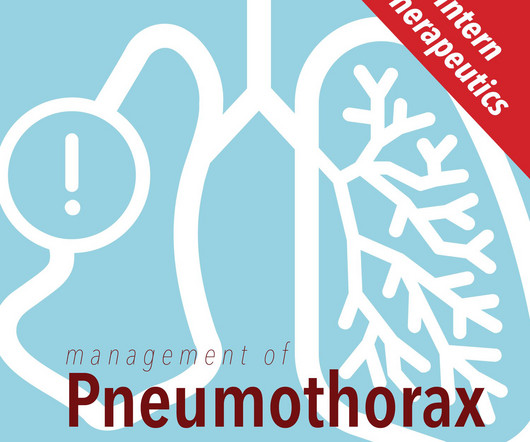emDOCs Podcast – Episode 116: Massive Hemoptysis
EMDocs
MARCH 18, 2025
Physiologic dead space higher in chronic lung disease (COPD). Poor candidates: underlying pulmonary disease like COPD, lung cancer, bronchiectasis. Consult pulmonology/critical care, interventional radiology, and cardiothoracic surgery, which may mean transfer. Journal of Vascular and Interventional Radiology.












Let's personalize your content